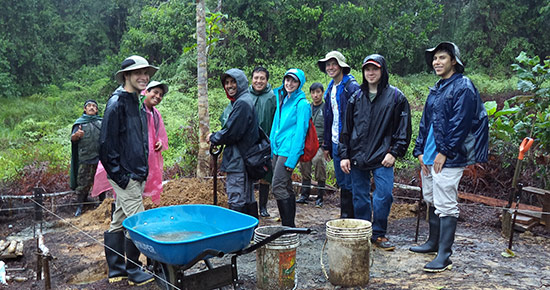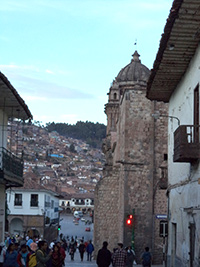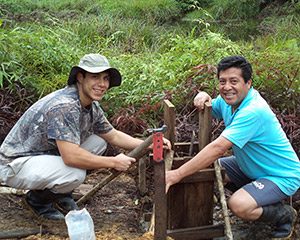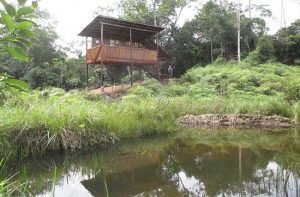Trip Report: Alternative Spring Break in Peru

Six students from the Tickle College of Engineering (TCE) embarked on an adventure to Peru from August 10-20, 2013. The trip was concentrated in the city of Cuzco as well as in the Manu Biosphere Reserve in the Amazon Rainforest, both designated UNESCO World Heritage Sites.
Students involved were Stephanie Kerrigan, biosystems engineering major;Bryan Medina, biomedical engineering major; Mark Nichols and Drew Keller, both civil engineering majors; and Shivam Zaveri and Nathan Siler, industrial engineering majors.
The host organization, CREES (Conservation Research and Environmental Education towards Sustainability) asked for help in the design and construction of an observation platform, to be used by researchers collecting data at an oxbow lake. In addition to review by students, TCE professors Dr. John Schwartz, Dr. James Mason, and Dr. Masood Parang provided assistance in the design.

Upon arrival in country, the group took a walking tour of the city of Cuzco, the historical capital of Peru, which has an elevation of 11,200 feet. After a traditional Peruvian lunch, they enjoyed shopping in an artisans’ market and tasted indigenous fruit at the produce market.
The next day, they took a two-hour car ride and a two-hour train ride to the historic site of Machu Picchu, the fifteenth-century “Lost City of the Incas”, through which they were guided by a specialist who pointed out construction techniques, discussed mummification and sacrifice, and told of day-to-day life in the ancient city, which was abandoned by the Incas just prior to the Spanish Conquest.

The bulk of the trip was spent on the service project in the Amazon. The research center, accessible only by boat, was host to citizens from Ireland, England, Scotland, New Zealand, Australia, and the United States during our time there. CREES staff gave a lecture on the history and mission of their organization (“Supporting a Sustainable Amazon”), provided data on plant and animal species on-site, and shared photographs of pumas, jaguars, and ocelots, captured on film by camera traps.
Students helped set posts in concrete as well as moved hundreds of pounds of river sand and rock to the site for use in the construction. They also had a two-hour hike to a primary forest, a significant focus of CREES since portions of the area suffer from deforestation.
